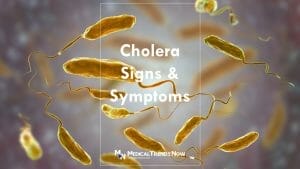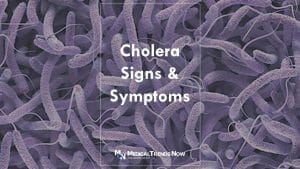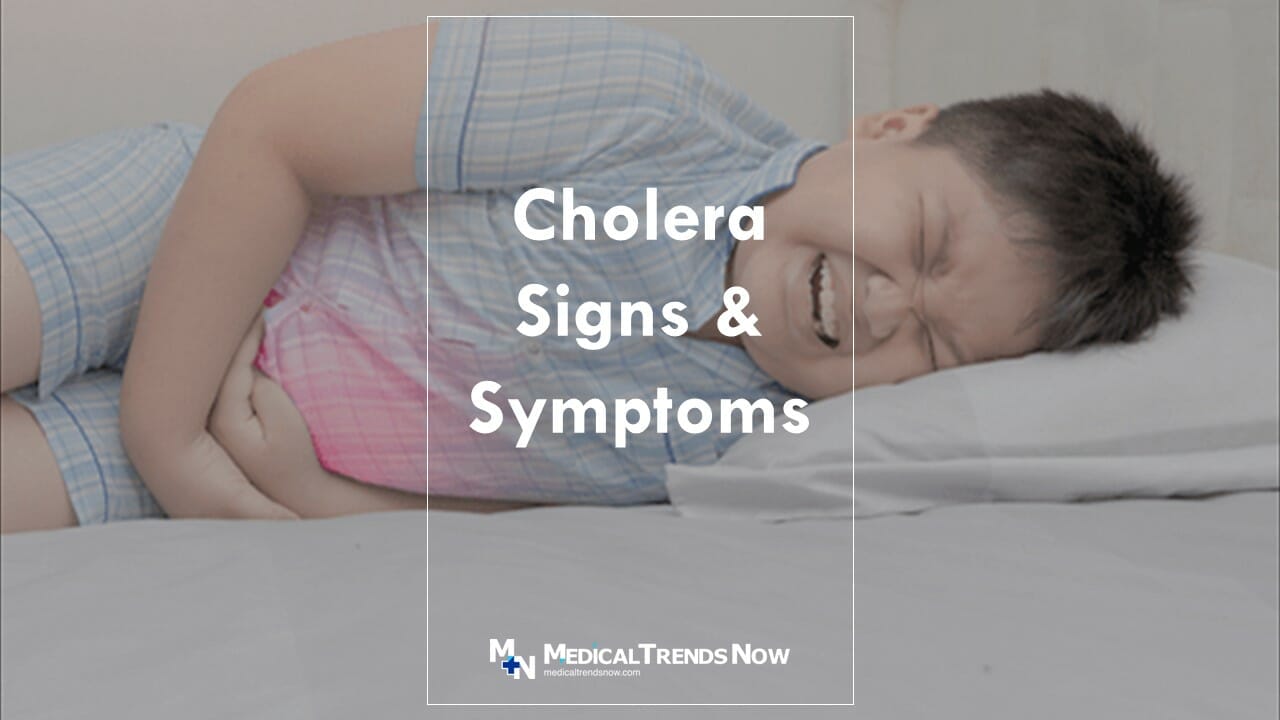Table of Contents
Cholera is a serious disease that affects many Filipinos around the country. It is caused by ingesting contaminated food or water and can have deadly consequences if not treated in time. Knowing what cholera is and how it can be prevented are important steps in protecting oneself from this potentially fatal condition. This article will provide information on the cholera signs and symptoms, the causes, as well as treatment and prevention methods.
Cholera Overview
Cholera is an acute diarrheal disease caused by the bacterium Vibrio cholera. It is one of the most severe illnesses that can be contracted, primarily through contaminated water sources or food. Cholera infection is characterized by severe watery diarrhea and vomiting, which can lead to rapid dehydration and death if left untreated.
The World Health Organization estimates that there are between 1.3 to 4 million cases of cholera each year, with up to 143,000 deaths worldwide. The majority of cases occur in Africa, followed by South Asia. Cholera has reemerged in Yemen since 2017 due to a civil war-driven collapse in infrastructure, resulting in over 2 million infected people so far and more than 3,400 deaths reported as of October 2020.
In the Philippines, the risk of cholera in the Philippines was 2.6 cases per 100,000 population as of 1st January 2022, compared to only 0.7 cases per 100,000 population reported over a similar period. This is according to Crisis24, a security risk, and crisis management consulting firm.
Causes of Cholera
Cholera is a serious and potentially life-threatening illness that, if left untreated, can lead to severe dehydration and even death. It is caused by bacteria found in water or food contaminated with feces from an infected person. While this disease can be prevented with proper hygiene and sanitation practices, it continues to claim thousands of lives worldwide every year.
The most common cause of cholera is consuming contaminated food or water that has been exposed to the Vibrio cholerae bacteria. This bacteria thrives in warm climates with poor sanitation systems, leading to outbreaks where clean water sources are unavailable. In addition, ingesting raw shellfish from coastal areas where sewage is discharged into bodies of water may also lead to infection, as untreated human waste can carry cholera-causing bacteria. Cholera signs and symptoms may develop within hours or days of exposure to the bacteria, depending on the amount and concentration of contaminated water consumed. Cholera signs and symptoms typically begin with nausea and abdominal cramping, followed by vomiting and profuse diarrhea.
![AUGMENTIN Co-Amoxiclav 1gm antibiotic Tablet [PRESCRIPTION REQUIRED] - Watsons Pharmacy](https://e52hyu4yuyt.exactdn.com/wp-content/uploads/2022/10/AUGMENTIN-Co-Amoxiclav-1gm-antibiotic-Tablet-PRESCRIPTION-REQUIRED-Watsons-Pharmacy-300x292.jpg?strip=all&lossy=1&ssl=1)
Cholera Signs and Symptoms
Here are the cholera signs and symptoms that Filipinos should know about:
Cholera Signs and Symptoms #1: Watery Diarrhea
Cholera is an acute diarrheal infection caused by ingesting food or water contaminated with the bacterium Vibrio cholerae. Watery diarrhea is one of the most common signs and symptoms of cholera, and it usually appears within a few hours to five days after exposure to the bacteria. Patients often experience a sudden onset of large amounts of watery stools multiple times a day. This watery diarrhea can become so severe that it causes dehydration which can be dangerous if not treated quickly. Other signs and symptoms of cholera include vomiting, nausea, abdominal cramps, muscle cramps, and low blood pressure. Those infected with cholera may also have a rapid heart rate, sunken eyes, dry mouth or skin, and extreme thirst. In some cases, no other symptoms may be present besides watery diarrhea.

Cholera Signs and Symptoms #2: Abdominal Cramps
Cholera is a potentially life-threatening bacterial infection of the intestines. The bacteria can lead to severe diarrhea and vomiting, which can cause dehydration and shock. One of the most common signs and symptoms of cholera is abdominal cramps, which are often accompanied by other symptoms such as nausea, vomiting, and watery or bloody diarrhea. Abdominal cramps in cases of cholera may be severe and localized or generalized throughout the abdomen.
The severity of abdominal cramps associated with cholera depends on how advanced the illness has become. In mild cases, the cramping may be moderate but still very uncomfortable. In more advanced stages of cholera, extreme pain in the abdomen can occur along with other severe symptoms such as fever or rapid heart rate.

Cholera Signs and Symptoms #3: Nausea
Cholera is an intestinal infection that can cause severe dehydration and life-threatening complications if not treated promptly. Nausea is one of the most common cholera signs and symptoms. This symptom can range from mild to severe, depending on the severity of the infection. Generally, nausea will start within a few hours up to five days after exposure to the cholera bacteria. If a person experiences nausea along with other known signs and symptoms of cholera, such as watery diarrhea, vomiting, cramping in the abdominal area, fevers, or rapid heart rate, it is important for them to seek immediate medical attention.

Cholera Signs and Symptoms #4: Vomiting
Cholera is an infectious disease caused by ingesting contaminated water or food. It is often associated with significant vomiting and can cause severe dehydration and even death if left untreated. Vomiting is one of the cholera’s most common signs and symptoms, generally occurring within a few hours after exposure to the bacteria. Patients may experience nausea before vomiting, producing large amounts of fluid containing undigested food particles. In cases where people become dehydrated due to frequent vomiting, they may also experience abdominal cramping and muscular pain. Other common cholera signs and symptoms include watery diarrhea, excessive thirst, dry mouth and skin, sunken eyes, low blood pressure, dizziness, or lightheadedness.

Cholera Signs and Symptoms: Dehydration
Cholera is a bacterial infection that can cause severe dehydration and even death if not treated in time. It is important to be aware of the signs and symptoms of cholera so that you can quickly seek medical attention. Dehydration is one of the most common symptoms associated with cholera and may present itself in several ways.
The early stages of dehydration due to cholera include feeling faint, dizziness, dry mouth, headache, fatigue, urinating less often than usual, or producing dark-colored urine. As the condition progresses, other cholera signs and symptoms become more noticeable such as sunken eyes, low blood pressure, and rapid heart rate. In extreme cases, patients may experience difficulty breathing and seizures.

Cholera Signs and Symptoms – Tips
In some cases, symptoms may be mild but, if left untreated, can become life-threatening.
It is important for individuals who live in or travel to areas where Cholera outbreaks are common to familiarize themselves with the signs and symptoms so they can get early treatment if necessary. Early diagnosis is critical as it allows for rapid rehydration, which can significantly reduce mortality rates associated with this disease.
Cholera Diagnosis
Diagnosing Cholera can be difficult because its symptoms are shared with many other conditions. However, certain steps can be taken to diagnose this condition properly.
To diagnose cholera, a Filipino physician will start with a physical exam to rule out other possible causes of the patient’s symptoms. During this exam, they may review medical history and ask questions about recent travel or contact with anyone who may have been infected with cholera. Afterward, a stool sample will be collected from the patient to identify any signs of Vibrio cholerae present in their system.
Other tests that may be ordered include blood cultures, urine cultures, or antibody tests to detect antibodies against Vibrio cholerae bacteria in the bloodstream. Imaging scans such as X-rays and CT scans may also be performed if necessary to rule out other conditions that can mimic cholera symptoms.
Cholera Risk Factors
Cholera is a serious and life-threatening disease caused by the bacterium Vibrio cholerae, which can contaminate food or water. It is still found in many parts of the world, but it mainly affects countries with poor sanitation and inadequate access to clean drinking water.
There are several risk factors associated with cholera, including living in an area with contaminated water sources, eating raw seafood from contaminated waters, traveling to areas known for outbreaks of cholera, like in Easter Visayas, consuming food or beverages that may have been exposed to the bacteria, and having intimate contact with someone who has been infected. Filipinos who do not practice proper hygiene may also be at greater risk of contracting the infection.
Additionally, those with weakened immune systems due to HIV/AIDS or other conditions are more likely to contract the infection than those without such conditions.
![WATSONS Azithromycin antibiotics [PRESCRIPTION REQUIRED]](https://e52hyu4yuyt.exactdn.com/wp-content/uploads/2022/12/WATSONS-Azithromycin-antibiotics-PRESCRIPTION-REQUIRED-300x300.jpg?strip=all&lossy=1&ssl=1)
Treatment for Cholera
Treatment for Cholera depends on how severe a person’s infection is.
For mild cases of Cholera, the treatment consists of replacing lost fluids with oral rehydration solutions (ORS).
In more severe cases with complications such as dehydration or shock due to loss of body fluids, intravenous (IV) fluids may be needed along with antibiotics to fight off the bacteria.
Antibiotics such as tetracycline or doxycycline have been found to be very effective against this particular strain of bacteria.
![Ciprofloxacin 500mg 1 Tablet [PRESCRIPTION REQUIRED] Watsons Pharmacy](https://e52hyu4yuyt.exactdn.com/wp-content/uploads/2022/12/WATSONS-Ciprofloxacin-500mg-1-Tablet-PRESCRIPTION-REQUIRED-Watsons-Pharmacy-300x300.webp?strip=all&lossy=1&ssl=1)
Cholera Prevention
It is important to take preventive measures to reduce the risk of getting cholera.
The most effective way to prevent cholera is to practice good hygiene. This means washing your hands regularly with soap and warm water, especially before preparing food and after using the bathroom. Additionally, it’s important to drink only boiled or treated water, as contaminated water can contain the bacteria that cause cholera.
When traveling in the Philippines, where cholera may be present, such as in parts of Easter Visayas and across the country’s rural areas, choose bottled drinks or drinks made with boiled or treated water instead of tap water for the best results.
![ILOSONE Erythromycin Estolate Antibiotics Suspension 60mL [PRESCRIPTION REQUIRED] Watsons Pharmacy](https://e52hyu4yuyt.exactdn.com/wp-content/uploads/2022/12/ILOSONE-Erythromycin-Estolate-Antibiotics-Suspension-60mL-PRESCRIPTION-REQUIRED-Watsons-Pharmacy-300x300.webp?strip=all&lossy=1&ssl=1)
Impact of Cholera on Health and Society
Cholera is a deadly disease caused by consuming contaminated water or food. This infectious disease can cause severe dehydration and life-threatening complications if left untreated. Every year, millions of people across the globe suffer from cholera, and its effects on health and society are immense.
The impact of cholera is especially devastating in developing countries where inadequate sanitation systems make it easier for this disease to spread rapidly among communities. Cholera significantly affects the health of those affected, as it causes nausea, vomiting, and diarrhea that can quickly lead to dehydration and death if not treated promptly. It also affects society by causing economic losses due to decreased productivity and disruption in trade and commerce, exacerbating poverty levels in affected areas.
The global spread of cholera has claimed more than 1.4 million lives, with over five million cases reported annually.
The disease is endemic in some parts of the Philippines (Eastern Visayas), where there is inadequate access to potable water and sanitation facilities, including Mindanao.

When and Where to Get Help
Cholera is a potentially deadly, water-borne disease that is spread through contaminated food and water. It can occur suddenly and cause extreme dehydration, so it’s important to recognize the signs of cholera and know where to get help if you think you may be infected. The best place to get treatment for cholera is at a health facility or clinic specializing in treating the illness. These facilities are staffed with knowledgeable medical professionals who can accurately diagnose and treat the infection.
In many cases, people suffering from cholera don’t need hospitalization, but they should still seek treatment from a Filipino doctor or healthcare provider as soon as possible. Early recognition of symptoms such as vomiting, diarrhea, abdominal pain, and cramps can be critical in helping prevent dehydration-related complications.

FAQs
Here are some of the frequently asked questions about cholera in the Philippines:
Is there a home remedy for cholera?
While seeking medical attention for cholera is important, some Filipinos may be interested in trying home remedies for the condition.
Several natural options are purported to help treat and even prevent cholera, such as probiotics, zinc supplements, coconut water, and herbs like ginger root. However, it’s important to understand that there is no scientific evidence that these treatments work against cholera or other food poisonings. It’s also important to note that these remedies should not replace medical care; rather, they should be used in conjunction with professional care.
Additionally, individuals with cholera must stay hydrated and consume plenty of fluids until their symptoms subside.

Who is at risk of getting cholera?
Cholera is an infectious disease that affects millions of people worldwide every year. Caused by the bacterium Vibrio cholerae, it’s a water-borne illness that can be easily passed on from person to person. Sometimes, it can become deadly if not treated quickly and effectively. So who is at risk of getting cholera?
Typically, Filipinos living in a region where clean drinking water is difficult or impossible are more likely to contract cholera than those with easy access to safe water sources. Filipinos living in poverty are particularly affected due to inadequate sanitation systems and poor hygiene practices. Those lacking basic education on safely preparing food may be more prone than those with weakened immune systems due to HIV/AIDS or malnourishment.

What food or drinks to avoid cholera?
Knowing what foods and drinks should be avoided is essential to reduce your risk of getting cholera.
The most important thing to remember when preventing cholera is to drink only safe, clean water. Water sources such as lakes, rivers, and streams are unsafe for drinking unless they have been boiled for at least one minute before consumption. Raw fruits and vegetables should be washed thoroughly with soap before being eaten; this helps prevent bacterial contamination from occurring in the first place.
Additionally, raw fish or shellfish should be avoided as they may contain Vibrio cholerae, the bacteria that causes cholera. When eating out at restaurants or purchasing food from street vendors, it’s important to make sure that all food has been cooked properly; otherwise, there is a risk of contamination with the bacteria leading to illness.

What kind of doctor can treat cholera
Generally speaking, physicians in the Philippines who specialize in infectious diseases are best equipped to diagnose and manage cholera cases. These Filipino doctors have extensive knowledge about the virus and its potential treatments and experience dealing with cases similar to yours.
Furthermore, they’ll be able to provide personalized care tailored specifically to your situation. This might include advice on dietary modifications or recommendations for over-the-counter medications to reduce the severity of your symptoms.
Cholera is a severe gastrointestinal illness that can cause life-threatening complications if left untreated. Understanding the signs and symptoms of cholera is important for anyone living in an area where it’s common. If you suspect that you or someone else may have contracted cholera, it’s essential to seek medical attention promptly. So, what kind of doctor can treat cholera?

What should I ask my Filipino doctor?
If you are concerned about your risk of cholera, it is important to talk to your doctor in the Philippines. Cholera is a serious and potentially life-threatening infection that can cause severe diarrhea and dehydration. To ensure you’re taking the right steps to protect yourself, here are some questions you should ask your Filipino doctor about cholera:
First, inquire with your Filipino doctor if there are any areas where cholera outbreaks occur more frequently than others. This way, you can be aware of places to avoid or take extra precautions when traveling.
Secondly, ask what specific symptoms of cholera look like so that if they do appear suddenly, they will not be mistaken for something else.
Additionally, it’s beneficial to understand how the infection is spread so that proper hygiene practices can be maintained, such as washing hands thoroughly with soap and water after using the bathroom or before eating food.

What will happen if I don’t treat cholera?
Cholera is an infectious disease that can be deadly if left untreated. It is caused by consuming contaminated food or water, and symptoms include extreme diarrhea, vomiting, and dehydration. If cholera is not treated, it can lead to serious complications and even death in some cases.
Patients with severe cholera may require hospitalization, where they can receive intravenous fluids to replace lost electrolytes and rehydrate the body. Without treatment, the infection can cause significant fluid loss within just a few hours, leading to shock or organ failure if left untreated for too long.
In addition to electrolyte replenishment, antibiotics are often prescribed to reduce the severity of symptoms and kill any bacteria present in the intestines.

Conclusion: Cholera Signs and Symptoms in the Philippines
In conclusion, cholera is a serious, water-borne illness that can have significant health consequences if not treated properly. It is preventable through access to clean drinking water, proper sanitation, and hygiene practices and by avoiding potentially contaminated food. If Filipino patients suspect they may have cholera, it is important to seek medical care immediately to minimize the risk of complications. With the right awareness and preventive measures in place, the spread of cholera can be minimized, and its impact lessened in the Philippines.

Sources: Cholera Signs and Symptoms Among Filipinos
- Illness and Symptoms | Cholera – CDC
- Cholera – Symptoms and causes – Mayo Clinic
- Cholera: Symptoms, Causes, Treatment & Prevention – Cleveland Clinic
- Cholera – World Health Organization (WHO)
- Causes and Symptoms of Cholera – MN Dept. of Health
- Cholera (for Parents) – Nemours KidsHealth
- THE OUTBREAK OF CHOLERA IN THE PHILIPPINES IN 1905.THE METHODS USED IN COMBATING IT, WITH STATISTICS TO JAN. 1, 1906. – JAMA Network
- Cholera cases up 286% in the Philippines through first nine months – Outbreak News
- Epidemiology of Cholera in the Philippines – PMC – NCBI
- Cholera, sign of inequity, rising in PH with cases up by 254% – Philippine Daily Inquirer
- Philippine Red Cross rushes aid to cholera-stricken town in Negros Occidental – ReliefWeb
- Cholera cases up by 254% from Jan. 1-Nov. 2 – Philippine News Agency
- The Philippines insurrection and the 1902–4 cholera epidemic – Science Direct

Disclaimer
This website is intended to educate both members of the general public and those working in the medical field on the prevalence, causes, and methods for preventing, diagnosing, and treating diseases that affect people throughout their lives. This website’s content is provided solely for informational reasons and is not meant to serve as a substitute for the advice of a qualified medical practitioner.













